Tips For Sanitizing & Cleaning A Cutting Board
Cleaning a cutting board is important for food safety and to avoid cross-contamination. Here's tips for sanitizing and cleaning both wood and plastic cutting boards properly.
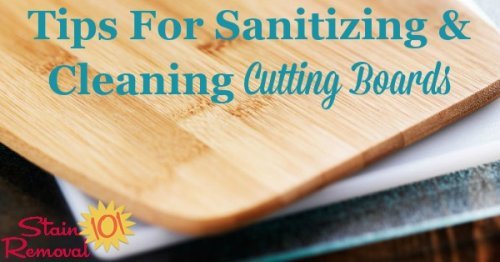
Your cutting boards, like all other kitchen equipment, needs to be cleaned after each use. But as mentioned it is doubly important to make sure you're properly cleaning your boards because of the fact that foods which can have harmful bacteria on them touch your boards, and you want to make sure those bacteria do not spread to other foods or surfaces in your kitchen.
Use Different Cutting Boards For Raw Meat & Produce
Most people know that after you cut raw meat on your board that you should sanitize it, but did you know you should always carefully wash and periodically sanitize your boards even when all you use them for is to cut produce?
The reason is that even produce can have bacteria that cause food-borne illnesses, such as produce that has E-Coli or Listeria contamination. That's why properly washing your produce is so important, and then washing all food preparation tools such as these boards.
But in addition, further avoid cross-contamination by using a separate board for use in cutting raw meat, and a different board for use in cutting produce. Label or otherwise differentiate the board you consistently use for raw meat to make it easier for yourself to know which board is which, so you don't accidentally switch uses for them.
For all the cleaning and sanitizing instructions below always sanitize your raw meat board after each use, and always clean and periodically santize your produce board.
Differences Between Plastic & Wooden Cutting Boards
There are lots of types of cutting boards, with the most popular ones being wooden (or bamboo), plastic, and glass. Each surface of cutting board feels different as you cut on it, and many people prefer the more traditional feel of a wooden cutting board. But with whatever type of board used, as you use it the board will get knicks and grooves in it from the knife. These knicks and grooves are what make cleaning a cutting board tough, but you need to clean them thoroughly because that is where the bacteria gets into.
Many experts suggest using a plastic cutting board for cutting meat because plastic boards can take more heavy duty cleaning methods without needing as much care, which makes it easier for you to maintain proper food safety. But since you can properly sanitize a wooden cutting board if you prefer to use one for your meat you can. You just need to understand that it will be a more involved process to care for the wooden board than for a plastic one, and the steps necessary to sanitize it will put additional wear and tear on your expensive wooden board so it may need to be replaced sooner than otherwise.
Clean Your Cutting Boards Using Hot Soapy Water
After each use you need to clean your cutting board, and doing so is pretty simple. Just like with any other food preparation tool, if you're washing by hand just use hot soapy water, scrub thoroughly, and rinse liberally with hot water afterward. Then, either air dry or blot dry your board with a clean dish towel.
If you've got a plastic cutting board you can also use your dishwasher to clean it. Your dishwasher uses even hotter water than your hands can handle, as well as the fact that many dishwashers also have a sanitizing cycle, so when possible, and you're concerned about making sure your board is as clean as possible, the dishwasher is your best bet.
Most wooden and bamboo boards cannot withstand being run through the dishwasher though, which means you've got to be even more careful with your hand washing. If you use your board only for cutting produce cleaning it by hand with the hot soapy water is generally enough, but if you have used the board to cut raw meat you need to always take the additional steps below to sanitize it.
How To Sanitize Your Cutting Board
To properly sanitize anything you've got to clean all the organic matter from it first, so as I mentioned above, the first step is to clean it with hot soapy water and to remove food debris.
Then, to sanitize either a wooden or plastic cutting board you should soak the board in a diluted bleach solution. Add 1 tablespoon of chlorine bleach to a gallon of water (or fill up your sink to soak the board and add the bleach to that water) and let the board soak for 5 minutes. Then, rinse thoroughly.
This step allows proper time for santizing the board, and allows the bleach water to get into the small grooves and knicks of the surface of the board to properly sanitize all of it.
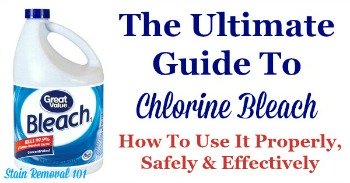
Additional Care Necessary For Wooden Cutting Boards
As mentioned above, this sanitization method works for both plastic and wooden boards, but it is harsher on wooden boards. These wood cutting boards cannot withstand as much heat (which is why they can't go into the dishwasher normally), and soaking in the bleach solution can cause additional wear and tear. To keep wooden boards in good condition they need to periodically be moisturized using food grade mineral oil.
Remove Stains With Salt & Lemon
Sanitizing the board with a bleach solution will often also lift stains on your board caused by the various foods you've cut on it. However, there is another less harsh method you can use to remove cutting board stains, and that's using salt and lemon.
To use this method cut a lemon in half, and dip it in coarse salt. Then squeeze and rub the salted lemon onto your board. The abrasiveness will help remove food debris, plus the citric acid in the lemon, especially combined with the salt, will both help lighten and naturally whiten stains. This makes it a great method for removing stains from wooden boards that you don't need to sanitize as frequently if they're only used for cutting produce.
Tell Me How You Clean Cutting Boards
I've shared with you my methods for cleaning and sanitizing cutting boards, and now I'd love to hear your tips. You can share your cleaning tips here about cleaning your cutting boards or about anything else!
Further, this post is part of a series called How to Clean Anything {A Room By Room Guide}. I hope this series will become a good resource for you, with instructions on many different cleaning projects around your home.

In addition, you can get more kitchen cleaning hints and tips here.
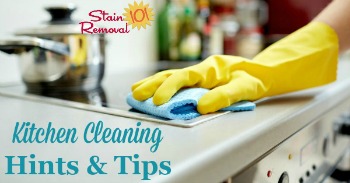
This article is sponsored by the Indiana's Family of Farmers. All thoughts and opinions are my own.
Thanks For Visiting My Website: Grab Your Free Gift!

Hi, I'm Taylor, a busy mom with 3 kids, so I have lots of hands on experience with house cleaning, laundry and my fair share of spots, spills and other messy catastrophes. Thanks for visiting my site.
I update the website all the time with tips, tutorials, cleaning recipes, reviews of products from readers like you, and tests I've done on various cleaners, removers and laundry supplies.
I'd love to give you a gift! When you subscribe to my free weekly newsletter you will receive a free printable laundry stain removal chart that you can reference as needed.
I hope you enjoy this gift, and stop by again soon!
Related Pages You May Enjoy
Tips For Speed Cleaning Your Kitchen
Homemade Cleaning Products Recipes
Go From Tips For Sanitizing & Cleaning A Cutting Board To Home Page
CAUTION: This website is provided for informational purposes only. It is provided as is, without warranties or guarantees. Some stains and messes just won't come out, and are permanent. Further, some cleaning methods can harm your item, so if what you want to clean or launder is sentimental or expensive call a professional. See disclaimer of liability for more information.
Popular How To Clean Articles
Let's Stay Connected!
Get Free Email Updates
(and get a FREE printable)
Related Pages
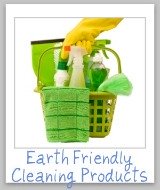 Green Cleaners: Which Brands Work Best?
Green Cleaners: Which Brands Work Best?
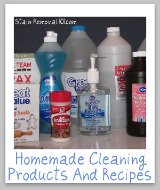 Make Your Own Cleaning Products
Make Your Own Cleaning Products
 Visit Household Management 101
Visit Household Management 101
 Visit Home Storage Solutions 101
Visit Home Storage Solutions 101
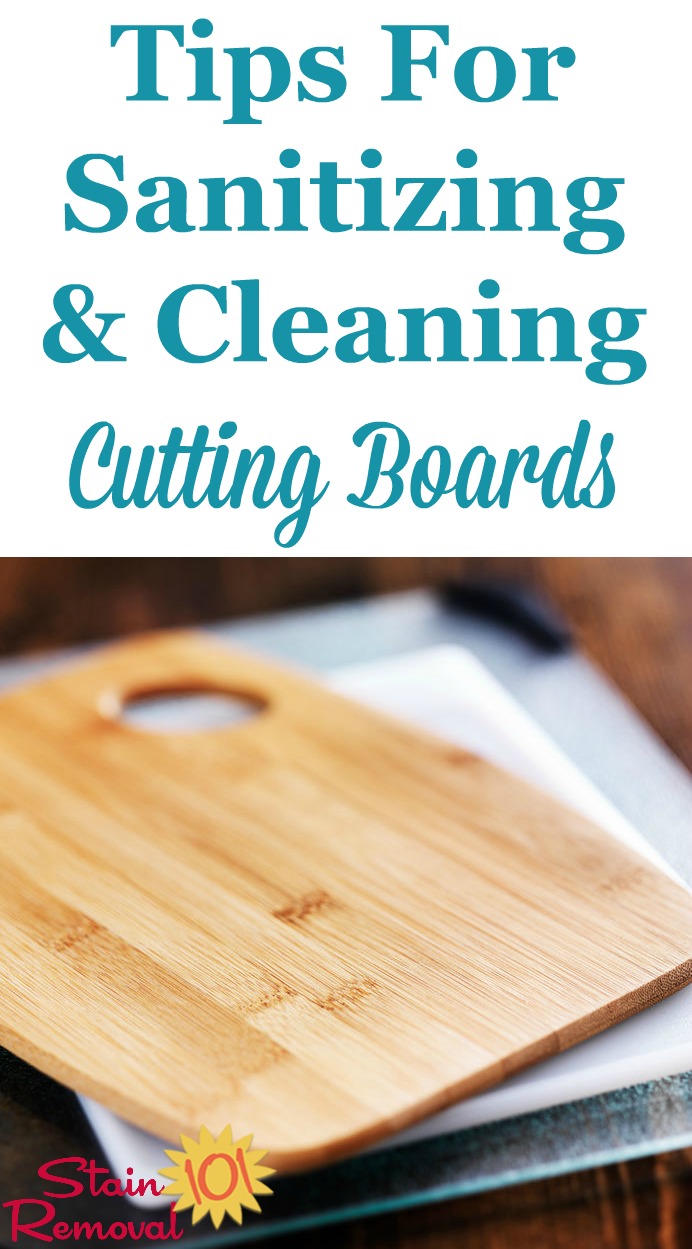

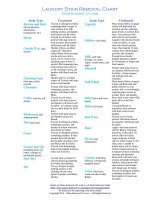
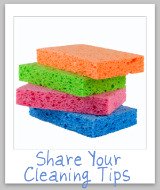
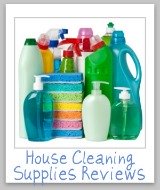
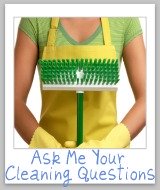
Share Your Comments, Tips & Ideas